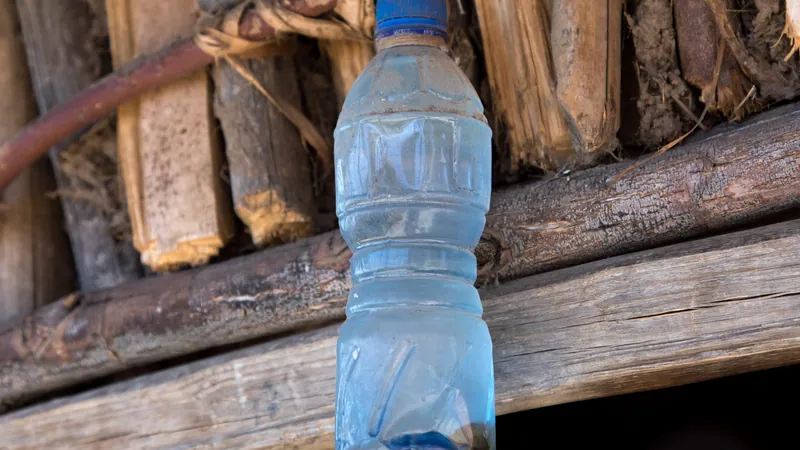
Tragedy Strikes Kinshasa: Floods Claim Lives Amid Desperate Conditions
2025-04-07
Author: Chun
Overview of the Tragedy in Kinshasa
In a devastating turn of events, torrential rains have wreaked havoc in Kinshasa, the bustling capital of the Democratic Republic of Congo, leading to at least 33 confirmed deaths. With a population of around 17 million, the city's infrastructure is under severe strain as residents face the dire consequences of extreme weather.
Government Response and Public Sentiment
President Félix Tshisekedi expressed his solidarity with the flood victims during a government crisis meeting, reassuring them, 'The republic will not abandon you.' As the city confronts the aftermath of the flooding, desperate residents are seen wading through chest-high water, attempting to escape the rising tide by whatever means they can, including makeshift canoes.
Impact of Flooding
The relentless downpours have catapulted the Congo River to its highest levels in almost 60 years, resulting in extensive flooding that has affected nearly half of Kinshasa’s 26 districts. The hardest-hit areas are primarily the outskirts and impoverished neighborhoods. One resident, Christophe Bola from Ndanu, described the harrowing scene, stating, 'The water has reached 1.5 metres high. We have just managed to save ourselves; the rest is trapped in our homes.'
Public Outcry and Infrastructural Strain
Anger and frustration are palpable among citizens who feel let down by the government's response. Many have criticized authorities for the delayed aid and inadequate support. Compounding the crisis, the floods have disrupted water treatment facilities, leaving countless individuals without access to clean water.
Transport Disruptions
Additionally, key transport routes remain impassable, including the main road linking the city center to the international airport and the motorway that connects Kinshasa to Matadi, the country's principal port. The damaging floods have also caused the N'djili River, a heavily polluted tributary of the Congo River, to overflow, further endangering residents.
Long-Term Challenges and Future Outlook
With sewage management issues persisting and little urban planning to mitigate such disasters, Kinshasa faces a daunting challenge moving forward. Although last year's government initiatives aimed to address these longstanding issues, implementation has lagged.
Weather Forecast and Climate Resilience
Looking ahead, further heavy rainfall is anticipated in Kinshasa and other regions of the DRC, including Goma, which has been embroiled in conflict due to rebel activity earlier this year. The national meteorological agency has issued warnings for severe weather conditions, particularly in the north and northeast of the country.
Conclusion
As Kinshasa grapples with this monumental disaster, questions abound regarding the approaches to climate resilience and infrastructure improvement in this rapidly growing city. The situation continues to develop, and the international community watches closely as the nation seeks to navigate through these turbulent waters.




 Brasil (PT)
Brasil (PT)
 Canada (EN)
Canada (EN)
 Chile (ES)
Chile (ES)
 Česko (CS)
Česko (CS)
 대한민국 (KO)
대한민국 (KO)
 España (ES)
España (ES)
 France (FR)
France (FR)
 Hong Kong (EN)
Hong Kong (EN)
 Italia (IT)
Italia (IT)
 日本 (JA)
日本 (JA)
 Magyarország (HU)
Magyarország (HU)
 Norge (NO)
Norge (NO)
 Polska (PL)
Polska (PL)
 Schweiz (DE)
Schweiz (DE)
 Singapore (EN)
Singapore (EN)
 Sverige (SV)
Sverige (SV)
 Suomi (FI)
Suomi (FI)
 Türkiye (TR)
Türkiye (TR)
 الإمارات العربية المتحدة (AR)
الإمارات العربية المتحدة (AR)